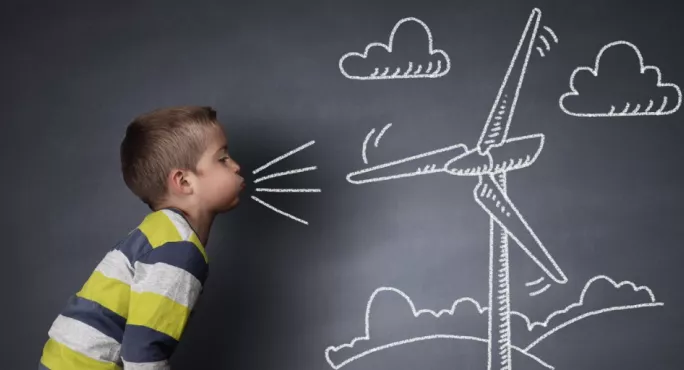5 ways to reduce your school’s carbon footprint

The need for schools to be energy efficient has never been more pressing.
As well as the growing agenda on climate change, sustainable energy and biodiversity, energy prices are rising - and fast. If schools want to contribute towards saving the planet (and save some money in the process), they need to act now and start to put sustainability at the heart of everything they do.
Some schools are already on this journey, and many have embedded environmental education, as well as eco-friendly practices, throughout everyday school life. But others might be lagging behind because of limited time and resources.
So how can those with little experience in this area go about changing things for the better in the long term? Tes spoke to some eco experts and some senior leaders to find out.
1. Do an energy audit
Robert Schrimpff is the chief executive of Solar for Schools, a social impact company dedicated to supporting schools on sustainability. He says the first thing every school should do is an audit.
“If you look at the carbon footprint of a school, generally, its energy consumption is mainly around heating and lighting,” Schrimpff explains.
“Look at your gas and electricity bills and whether you could reduce those. Most schools have now implemented LEDs as much as they possibly can, and others have invested into solar panels.”
2. Engage the whole community
Different people may have different motives for taking action to reduce a school’s carbon footprint. Lee Wray-Davies, an education manager at Eco-Schools, suggests playing into people’s interests, whether they’re concerned about the planet or just cutting costs.
“It’s all about taking people on an eco-journey,” she explains. “Even if they don’t realise it at first, staff and students soon begin to notice the changes that are being made around the school, and become engaged and enthused with the green agenda.”
The key to all changes is student buy-in, says Brendan Tapping, the chief executive of Bishop Chadwick Catholic Education Trust (BCCET) in the North East of England. He hosts a student forum each term in which students can pitch their eco ideas and give feedback on changes happening in school.
“The passion of our young people for addressing climate change and sustainability comes across loud and clear,” she says.
“Yes, as leaders we can make decisions to improve sustainability, but we really need to engage with the young people, staff, and our wider community if we’re going to have this wider impact on society and on the way we live.”
3. Take action where it matters
With an audit complete and a community behind you, it’s time to put things into practice.
Together with BCCET, Bishop Wilkinson Catholic Education Trust (BWCET) has developed a major energy efficiency programme designed to remove over 1,100 tonnes of carbon every year across 58 schools. They started in one of the places that Schrimpff suggests can have the biggest impact: the kitchen.
Tapping has led the charge on an investigation into the trust’s catering and they currently have a tender out to deliver all the school’s food produce, but have made some significant requirements.
“We’ve talked about carbon footprint in terms of the transport links both of suppliers, and their produce suppliers. We’ve asked them what their move towards electric vehicles is like, as well as how sustainable their producers are, and really look at it from farm to fork,” he explains.
“We want local suppliers to provide produce, and we are also thinking about seasonality in terms of the menu development. Some schools have started to plant kitchen gardens, so we can grow our own produce.”
4. Embed sustainability in the curriculum
Becoming more sustainable isn’t just about making physical changes, says Schrimpff, but educational ones, too.
“It’s extraordinary that sustainability isn’t officially on the curriculum, and there is work ongoing to change this. It should intrinsically be embedded in all subjects. So far, we’ve linked it to maths, physics, English and geography, but there is work you can do around ethics, too, as well as global citizenship,” he says.
“The biggest impact a school can have is through education directly. If solar panels are put on a school, they might save 10 tonnes a year of C02 from it. But if the students learn about what’s involved, and go home and persuade their parents to switch to a green electricity supplier, each of those families could save one to two tonnes of C02 as a result of that change.
“The faster we can get schools teaching and empowering their students about what can be done to decarbonise, the fastest society will decarbonise.”
5. Match short-term change with future-proof decisions
As well as looking at what they can change about existing provision, BCCET also has an eye on the future. They’ve just received money through the condition improvement fund (CIF), which will pay for a dining room and classroom extension at one of the schools. At the heart of this building work is sustainability, says Tapping.
“In terms of the capital expenditure, it will take just seven years for them to pay for themselves, so the new buildings will have solar panels, a sedum roof and an air source heat pump,” he says.
As well as the big things, schools must think about small changes that can be introduced right now, says Tapping. Planting trees, making sure laptops turn off automatically, and introducing reusable school-branded water bottles are all changes that are quick, easy and have an immediate impact.
Of course, none of this work is free - or easy. But it’s absolutely crucial that leaders dedicate time and resources to becoming more energy efficient. Why? Perhaps Tapping puts it best.
“There’s an understanding that if we are educating our young people, we need to lead by example, and operate in an eco-friendly manner if we are going to have credibility,” he says. “And we need to demonstrate that in every single thing we do.”
Find out how Drax can help your school achieve its sustainability goals by visiting energy.drax.com
